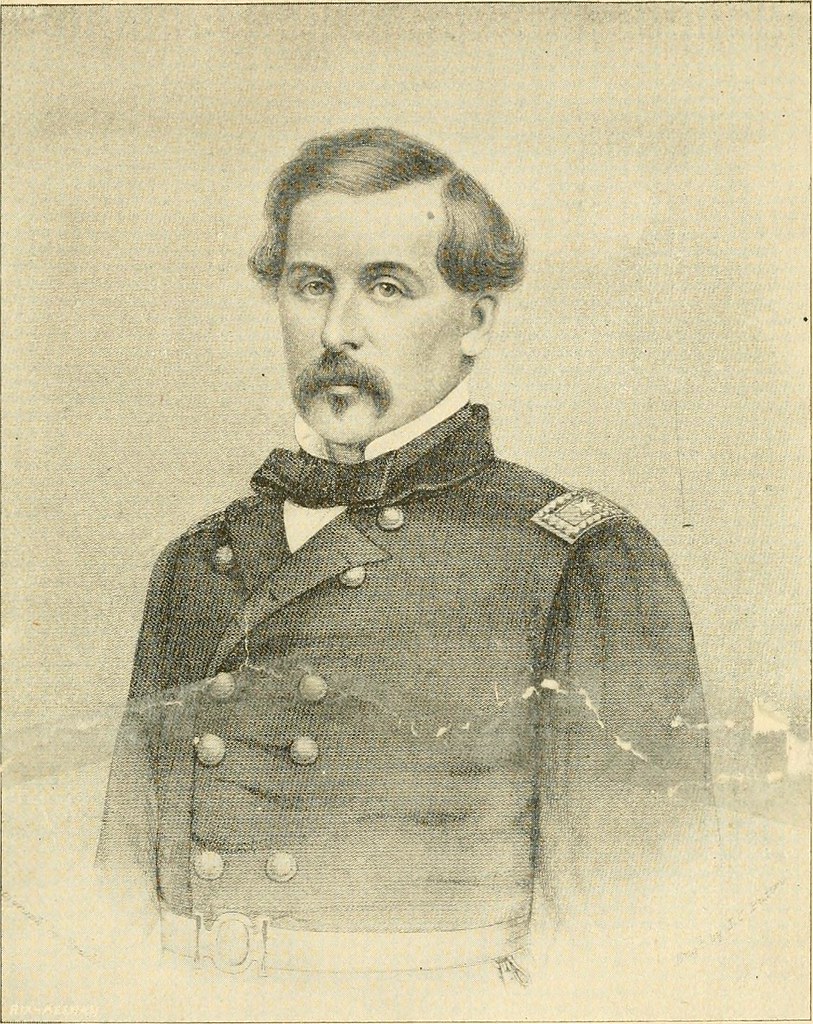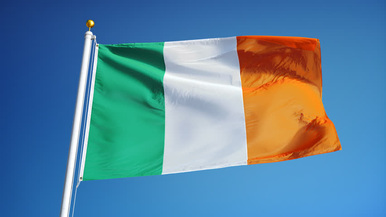The national flag of Ireland is understandably recognized and respected around the world. It is flown at sporting events, political occasions, and often employed at funerals for those who died for their country, including Republican martyrs. It is, like all flags, more than just a piece of cloth. It is the symbol of a nation.

However, the flag of Ireland represents more than just the idea of a national identity. The colours were chosen to represent certain concepts, now in question. In this article, we look at the story behind those decisions and what they mean today.
The Irish tricolour was first presented to the public by the Irish Republican Thomas Francis Meagher. He is believed to have received it as a gift from a group of female French sympathizers of Irish Republicanism in 1848. It was on 7th March, in that year, that Meagher hung the flag from the second floor window of the Wolfe Tone Club in Waterford, his native city. He was addressing a gathering assembled to celebrate revolutionary activity in France. The Irish flag was inspired by the French one. Although the three colours of Green, White and Orange were in use previous to this date, on badges, rosettes and the banners of trade guilds for example, they were not included on any national Irish flag.
In explanation of the colour selection, Meagher stated thus:
‘The white in the centre signifies a lasting truce between Orange and Green and I trust that beneath its folds the hands of Irish Protestants and Irish Catholics may be clasped in generous and heroic brotherhood.’

Thomas Francis Meagher
The green on the flag was meant to represent the Nationalist tradition (mostly Catholic). The Orange was intended to do the same for the Colonial tradition (mostly Protestant). The white, as Meagher stated, was designed to symbolize peace between the two.
The colour orange was long associated with the Protestants of Ireland due to their allegiance to King William of Orange (King Billy), a protestant Dutchman who usurped the throne of England in 1689 and ultimately gained control of Ireland in the process. He came from the House of Orange. It was this same allegiance that lead to the formation of the Orange Order in 1795, in County Armagh.
It was only when the Irish tricolour was raised over the GPO, by Gearóid O’Sullivan, in Dublin, in 1916, that it came to be accepted as the national flag of a free Ireland. It was used by Republicans fighting in the Tan War (1919-21) and then continued by the forces of the Free State after the conclusion of the Civil War (1921-23). The flag was eventually given constitutional status in 1937. It is, therefore, in official use for less than one hundred years.
Today, Irish people at home and abroad look with fondness upon the tricolour. Those of both the Republican and Free State traditions claim it as their own. Ironically, those for whom the colour orange was added have never embraced the flag, and it is this anomaly that could give rise to the question,
Should the Irish national flag be changed?
Many readers will be horrified at the suggestion that such a revered symbol be discarded or even sidelined. After all, many brave men and women of the Republican community throughout recent history have died and been draped in it. It means so much to so many and represents, for them, the sacrifice of their loved ones. Is it, therefore, acceptable or advisable that the Irish national flag be changed for the reason of appeasing the feelings of those who will never accept it in any event? The answer appears to be clear. No.
But should this mean that the flag stays as it is? Well, to answer this, we must ask why the flag should possibly be changed. The answer lies in the use of the colour orange.
As stated previously, the orange segment of the flag represents the Orange tradition in Ireland. Today, this tradition is most readily seen in the aforementioned Orange Order which is most common in the Occupied Six Counties (OSC) of the north of the island. This organisation is sectarian. It has always been sectarian. The colour orange, used in a political context therefore, represents sectarianism and bigotry. William of Orange also represented sectarian bigotry. He was invited and accepted as King of England because he was not Catholic. There is no way to interpret the use of the colour orange in terms of political positioning in Ireland that will not indicate some form of sectarianism.
Should such a colour, therefore, be granted any place on the Irish flag?
When the orange segment was initially given a place on the flag, it was done with good intent but, ultimately, those responsible were guilty of a quixotic ignorance to what their decision would mean in the long-term. Those who adhere to the Orange (colonial) tradition were never going to give any allegiance to a national Irish emblem. The entire endeavour was flawed from the beginning. Wishful thinking cannot be said to get results.
Additionally, at the time of the flag’s creation, the colonial tradition – or those represented by the colour orange – accounted for less than one fifth of the total population of Ireland, yet orange was afforded a disproportionately large space on the national flag. We must wonder why a colonial population of less than 20% of the total was allowed equal space on this symbol of Ireland.
Given the sectarian nature of Orangeism, as evidenced in the anti-Catholic criteria for membership of the Orange Order, is it appropriate that it be included and, if it should, then is it appropriate that it’s importance be exaggerated? Indeed, as Ireland moves into a secular future, should there be any reference whatsoever to religion on the symbols and emblems of the country? (note: the shamrock is also a Christian emblem)
Ireland has changed a lot in modern times. Immigration has reshaped the Irish nation. In the Irish Free State, for example, it is stated that 1 in 6 citizens were not born there. That statistic makes the southern Irish state one of the most diverse in Europe. The current Unionist population, or those from the colonial, Orange tradition, in the OSC stands at approximately 900,000. Yet those on the island who can be identified as coming from a non-Irish background number more than 800,000.
Is there an argument to be made that the ‘Orange’ tradition is now on a par, in terms of importance, with those in Ireland who are not Irish? If the answer is yes, then should the Orange sector still be afforded a special place, or any place, on the national flag of Ireland, especially when the new arrivals to the country get no acknowledgement?
It’s an emotive topic, and one which will never provide a solution to satisfy everyone. It would seem, however, that sectarianism, and anything which represents such a vile ideology, should be removed from official life. The inclusion of the colour orange merely confers respectability upon sectarian bigotry. It also ignores the harm caused by groups such as the Orange Order, which continues to ply its bigoted wares across Ireland today.
Changing a flag need not be a traumatic event. As mentioned previously, the current Irish flag is in official use for less than 100 years. Before that, there were various flags used to represent Irish independence. The image of the harp on a green background was reputed to have been used by Owen Roe O’Neill in 1642. It has taken a number of forms over the centuries since.

Here is another version:

And another:

If there’s one thing that the Irish can do well, it’s come up with competing alternatives to just about everything. The design of flags does not escape the Irish penchant for internecine rivalry.

Above is the earlier version of the famed Sunburst flag (An Gal Gréine), used by the Fenians of 1843. It was later updated by the more recognizable version shown below.
In 1916, the Starry Plough flag was unveiled when it was flown over the Imperial Hotel in Dublin by the Irish Citizen Army. Designed by George William Russell two years previous, the flag sought to represent both socialism and republicanism. The original is today housed at the National Museum, Collins Barracks in Dublin.

We can see just how many symbols of Irish freedom and sacrifice there have been, and certainly all of them deserve to be respected. But is there a strong case, now, for a similar change to what we currently have?
It would be interesting to see what designs Irish citizens could come up with. Rebel Voice would like to know what Irish men and women think would be a suitable flag for our modern times, or if indeed they believe that there should be a change. Perhaps, if designed carefully, any new flag would be the one that will last us through to a free Ireland, and a much-desired republic that encompasses all of our island and the people on it.

There should be no orange,it has nothing to do with ÉIRE.the flag should represent the indigenous Irish people,Green & white with a gold HARP & SHAMROCK
LikeLiked by 1 person
Great article, to me the white in the present Irish flag, just represents divide. The Irish flag should be green, with a spiral motif – this brings us right back to a time when we may have been more related to one an other than we remember…
LikeLiked by 1 person
A spiral motif sounds interesting. Like the ancient geometric designs at Knowth, for example?
LikeLike
How about changing the national flag only after Ireland is completely United?
LikeLiked by 1 person
Sound enough idea. But surely the debate could take place now, to get citizens thinking?
LikeLike